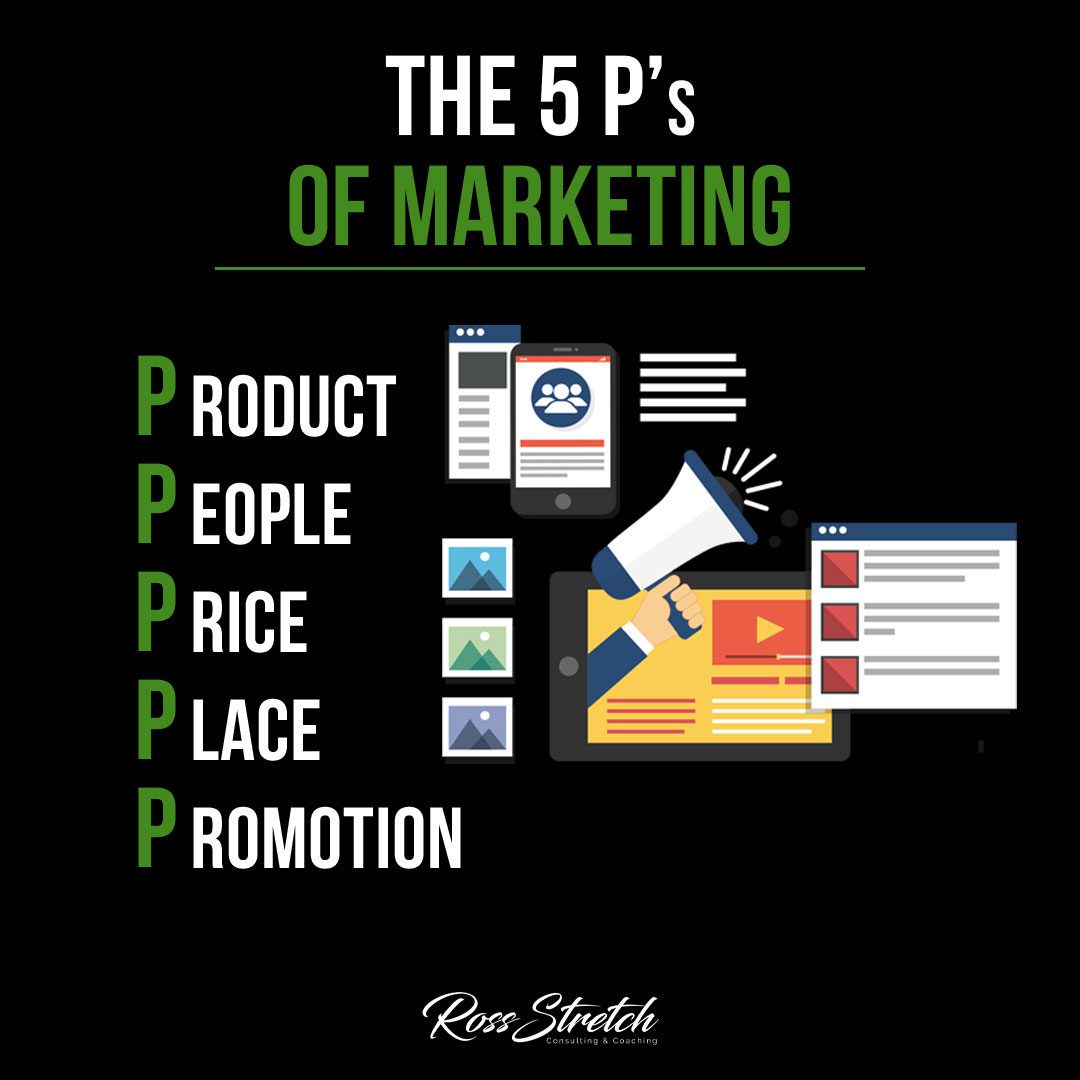Introduction: Learn effective marketing with the 5 P’s framework.
In today’s competitive business landscape, effective marketing is essential for success. To develop a comprehensive marketing strategy, it’s important to consider the 5 P’s: product, people, price, place, and promotion. These elements serve as a foundation for crafting impactful marketing campaigns, attracting customers, and driving business growth. In this in-depth guide, we will explore each of the 5 P’s in detail, providing valuable insights and practical tips to help you optimize your marketing efforts.
Mastering the 5 P’s of marketing is essential for developing a successful marketing strategy. By understanding and optimizing the elements of product, people, price, place, and promotion, you can effectively reach your target audience, differentiate your offerings, and drive business growth!
Ross Stretch
Product:
The first P of marketing is product. This refers to the goods or services your business offers to meet the needs and desires of your target market. To effectively market your product, consider the following:
- Identify your unique selling proposition (USP): Determine what sets your product apart from competitors and highlight this in your marketing messaging.
- Conduct market research: Understand your target audience and their preferences to tailor your product offerings accordingly.
- Focus on product quality: Ensure that your product delivers on its promises and provides value to customers.
- Develop a compelling brand story: Craft a narrative around your product that resonates with your target market and builds brand loyalty.
People:
The second P of marketing is people. This refers to your target audience and the individuals who interact with your product or service. To effectively engage with your target market, consider the following:
- Define your target audience: Identify the demographic, psychographic, and behavioral characteristics of your ideal customers.
- Create buyer personas: Develop fictional representations of your target customers to better understand their needs, preferences, and pain points.
- Personalize your marketing messages: Tailor your communication to resonate with your target audience and address their specific challenges or aspirations.
- Build strong customer relationships: Foster customer loyalty through exceptional customer service and personalized experiences.
Price:
The third P of marketing is price. This refers to the monetary value customers are willing to pay for your product or service. Consider the following when determining your pricing strategy:
- Conduct pricing research: Analyze market trends and competitor pricing to position your product competitively.
- Determine your pricing objectives: Are you aiming for market penetration, maximizing profits, or building brand reputation?
- Consider value-based pricing: Price your product based on the perceived value it provides to customers rather than solely on production costs.
- Offer pricing incentives: Implement promotional pricing strategies, such as discounts or bundles, to attract customers and drive sales.
Place:
The fourth P of marketing is place. This refers to the distribution channels and methods through which customers can access your product or service. Consider the following when determining your placement strategy:
- Choose the right distribution channels: Select channels that align with your target audience’s preferences and make your product readily available.
- Optimize your online presence: Establish a strong online presence through e-commerce platforms, social media, and a user-friendly website.
- Consider partnerships: Collaborate with complementary businesses to expand your reach and access new customer segments.
- Streamline the purchasing process: Ensure that your product is easy to find, purchase, and receive by optimizing your logistics and fulfillment processes.
Promotion:
The fifth P of marketing is promotion. This refers to the various marketing tactics used to create awareness, generate interest, and drive sales. Consider the following when developing your promotional strategy:
- Create a comprehensive marketing plan: Define your goals, target audience, and key messages, and identify the most effective marketing channels for reaching your audience.
- Utilize digital marketing strategies: Leverage online advertising, content marketing, social media, and search engine optimization to increase brand visibility.
- Incorporate traditional marketing tactics: Explore offline advertising, public relations, events, and direct mail campaigns to reach your target market.
- Measure and analyze your marketing efforts: Track the performance of your promotional activities to identify what works and make data-driven decisions.
Conclusion:
Mastering the 5 P’s of marketing is essential for developing a successful marketing strategy. By understanding and optimizing the elements of product, people, price, place, and promotion, you can effectively reach your target audience, differentiate your offerings, and drive business growth. Remember, each P interconnects with the others, and a well-rounded marketing approach considers all these aspects. So, take the time to evaluate your current marketing efforts and make adjustments as necessary to create a winning marketing strategy.
Resources:
- American Marketing Association: www.ama.org
- HubSpot Marketing Blog: blog.hubspot.com/marketing
- Neil Patel Digital: neilpatel.com/digital-marketing/


